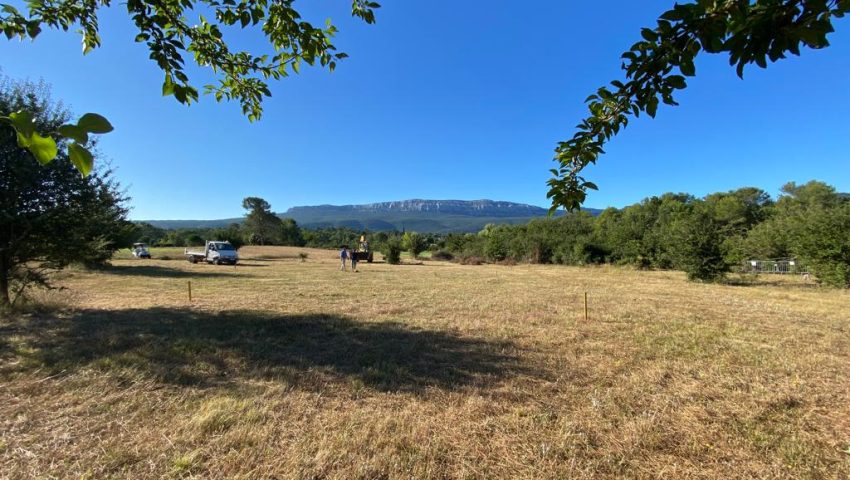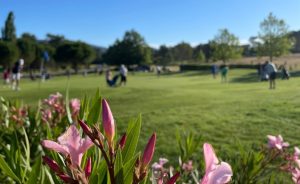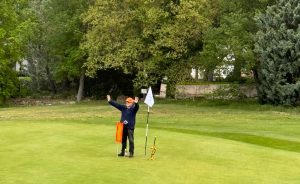A new green for hole 13 at the Nans Les Pins golf club
Following the redevelopment of holes 14 and 15 in early 2023, Golf Sainte Baume, situated in Nans Les Pins between Var and Provence, continues the modification of its layout with the establishment of a new playing area that will host the 13th green. Monitor the step-by-step progression of the implementation of these operations.
These undertakings in no way impede the current progression on the course; you can observe them from the vantage point of the new tee at hole 14. Immerse yourself in the behind-the-scenes process of creating a green.
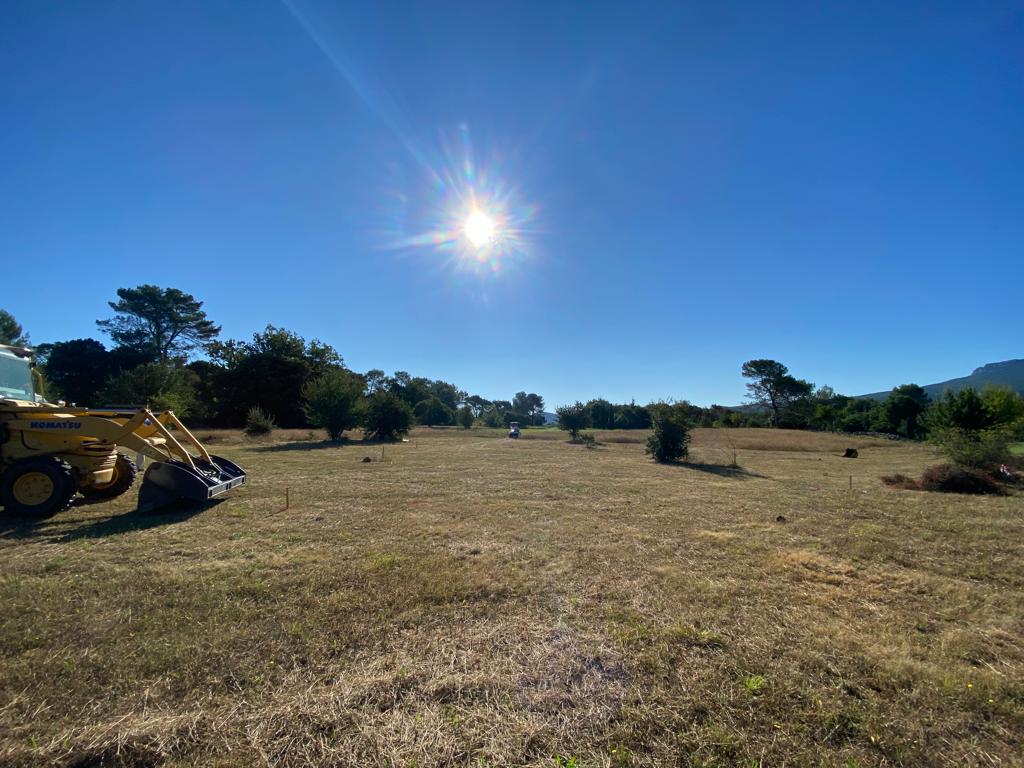
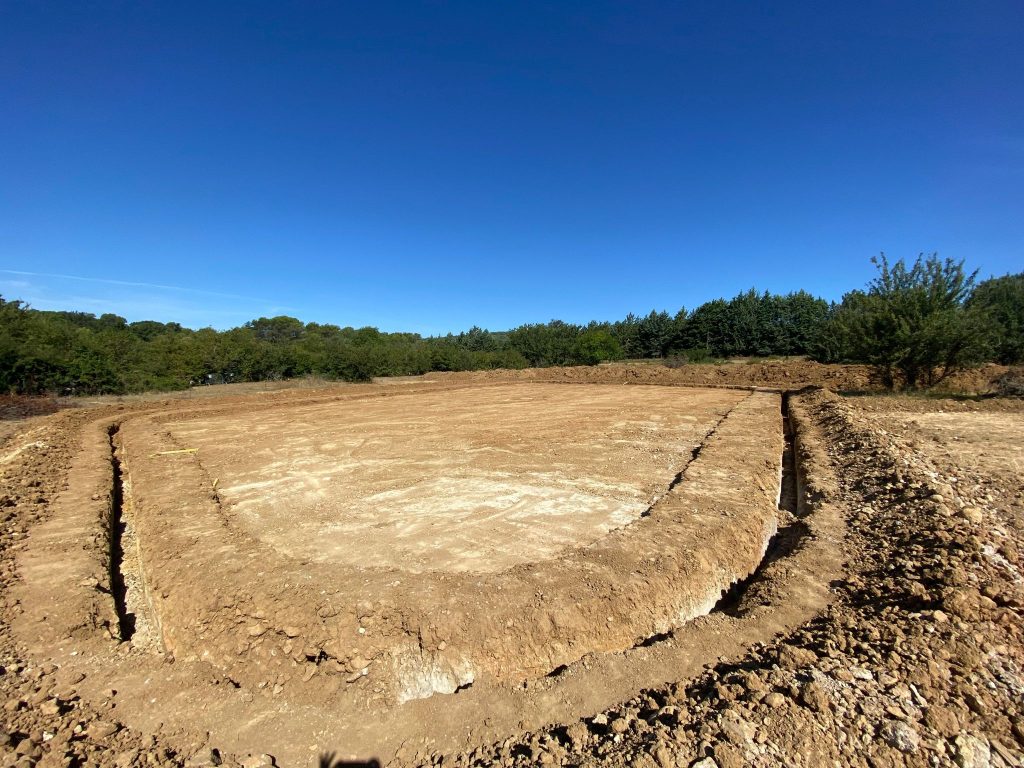
Study and analysis
The redesign of hole 13 was studied following the alterations made to holes 14 and 15. The available plot behind the tee of hole 14 has paved the way for a new playing area, transforming hole 13 from its current PAR 4 – a very short 270m dogleg right, to a longer fairway while retaining its PAR 4 status. This modification introduces novelty and technical challenges to the course.
After conceptualization, the feasibility study spanned several months. Initial staking was implemented to delineate a 600 m² area. It is worth noting that regulations mandate a minimum of 500m² for an international green. The green’s dimensions were established at 30m in length/depth and 20m in width, with its design conceived in a classic spirit, featuring only a gentle slope and grass bunkers as defenses.
The project was envisioned comprehensively, aiming to eliminate certain existing bunkers, erase the current green, and, of course, extend the fairway to the upcoming green. In August 2023, the construction commenced with the excavation of the entire area to a depth of one meter, shaping the subgrade.
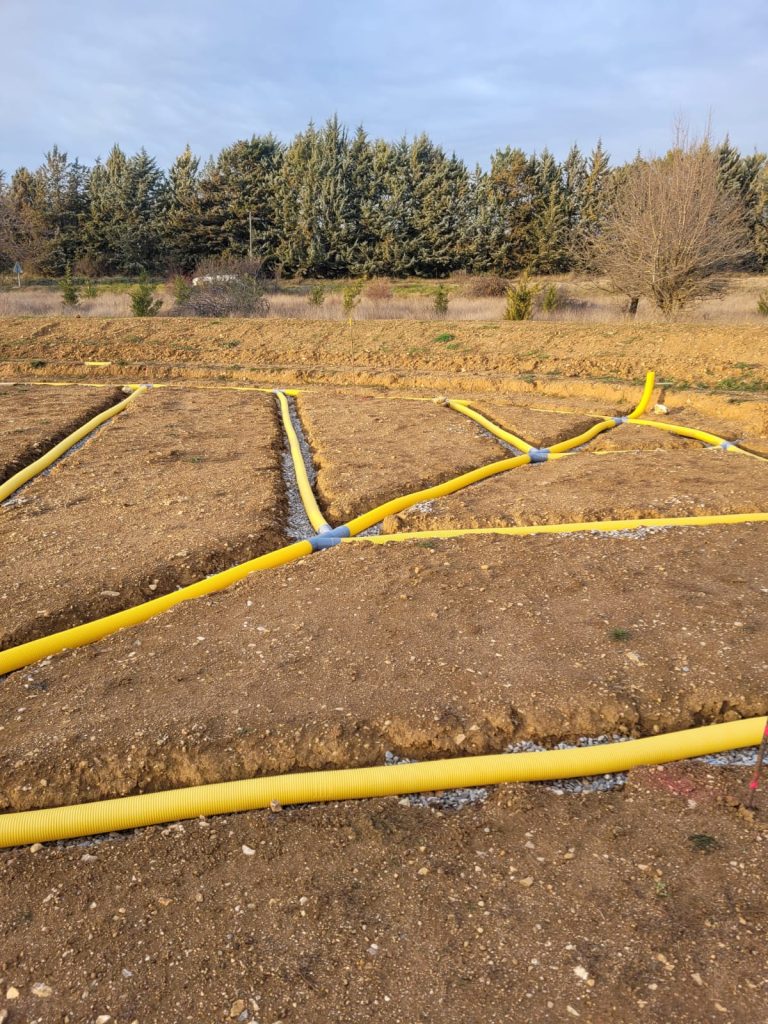
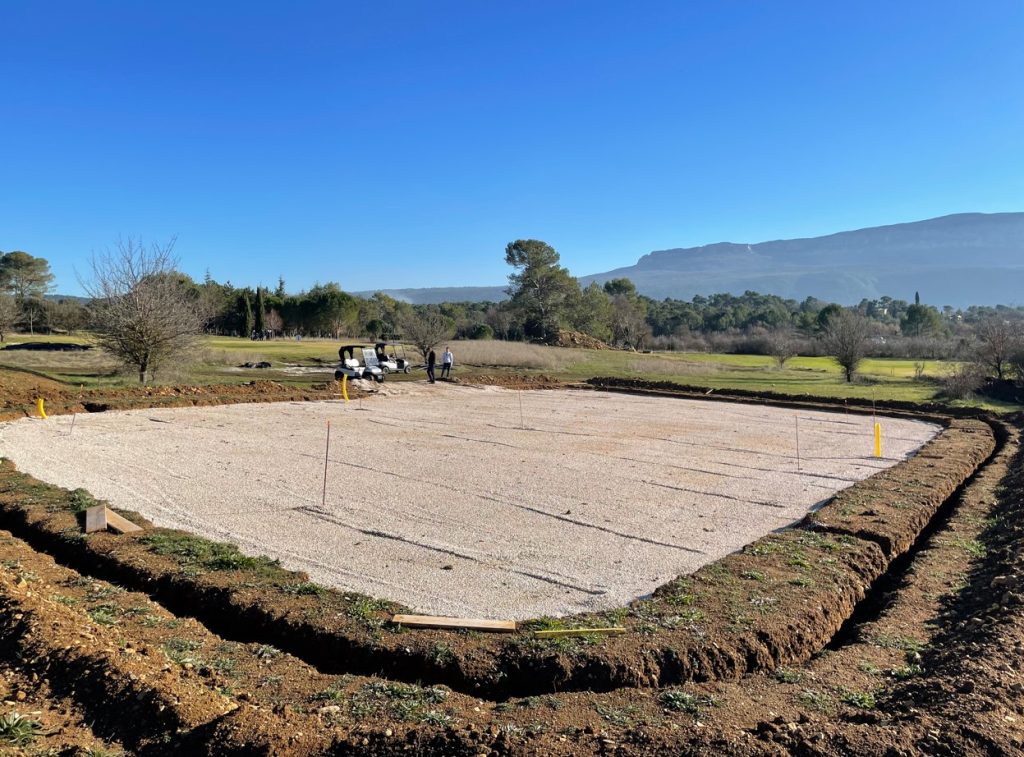
Earthmoving and Drainage
During the winter of 2024, with a slowdown due to weather conditions, the subgrade was finalized as planned, incorporating the necessary slopes for drainage and requirements for proper irrigation management. Subsequently, it was excavated to accommodate the drainage system.
The installation of drains and drainage antennas took place, along with the excavation of trenches to house the future irrigation equipment. The critical stages of effective drainage then commenced with the application and dispersion of permeable materials above the drains.
A first layer, 10cm in height, of 6/16 gravel was spread. Following this, a second layer consisting of finer gravel, known as “rice grain” with dimensions of 4/6, was added. To ensure the optimal drainage efficiency, this second layer of gravel had to be applied in multiple stages and compacted progressively between each step. This process aids in compacting the mixture and prepares it for the next layer.
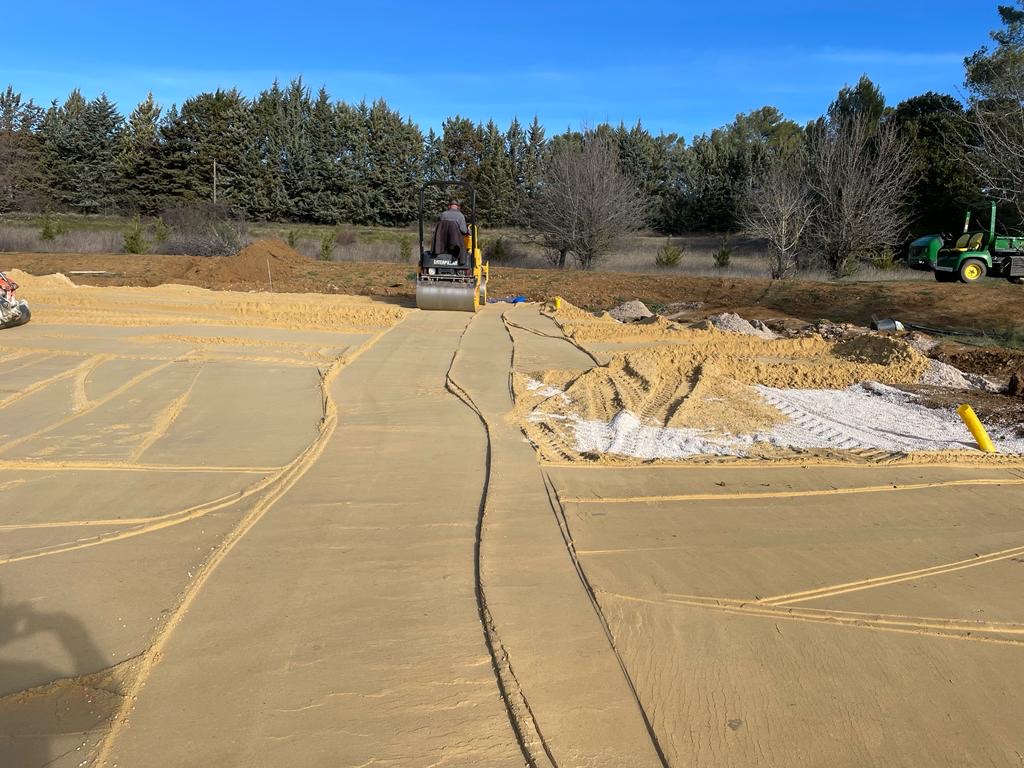
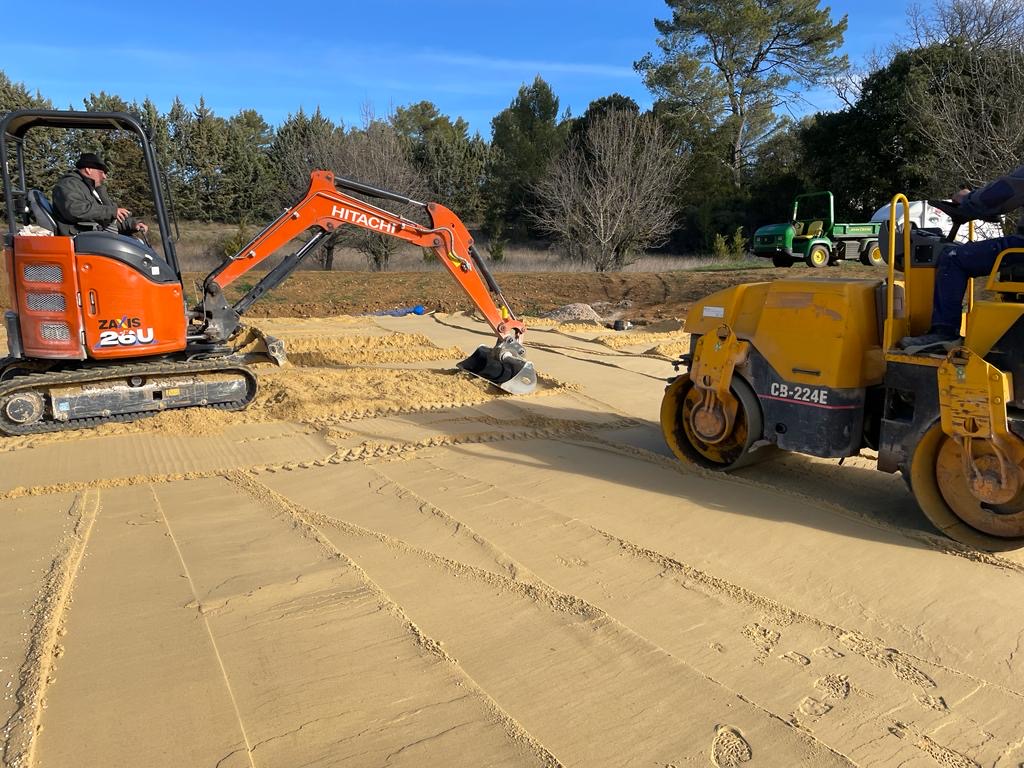
Irrigation and substrate
For the final 30 centimeters, multiple layers of materials were superimposed, primarily consisting of sand and amendments. These layers were meticulously implemented and compacted using a roller. The last 10 centimeters were filled with a foundational fertilizer. As sand tends to be neutral, the introduction of this amendment, an element of enriched fertilizer, will nourish the future soil.
The optimized management of the water resource was studied prior to the developments. GPS surveys determined four optimal points for the irrigation system. Positioned at intervals of 16 or 19 meters, four sets of two sprinklers were arranged in the area. Beyond pinpoint locations, the choice of sprinkler type was carefully considered.
Back-to-back sprinklers were selected for their ability to regulate irrigation for two distinct zones with precise timing. Calibration will be configured so that each pair of sprinklers can serve both the interior and exterior of the green area, responding with exceptional accuracy to the hydration needs of the surface. This preliminary study is indispensable for precise daily management.
With the essential elements now installed and in place, we yield to the primary actor in the success of this landscaping – nature. Through the elements of rain, wind, and sun, the developments anchor themselves and find their place before the seeding phase commences, marking the initiation of the final stage of the project. We will return to the site in April.
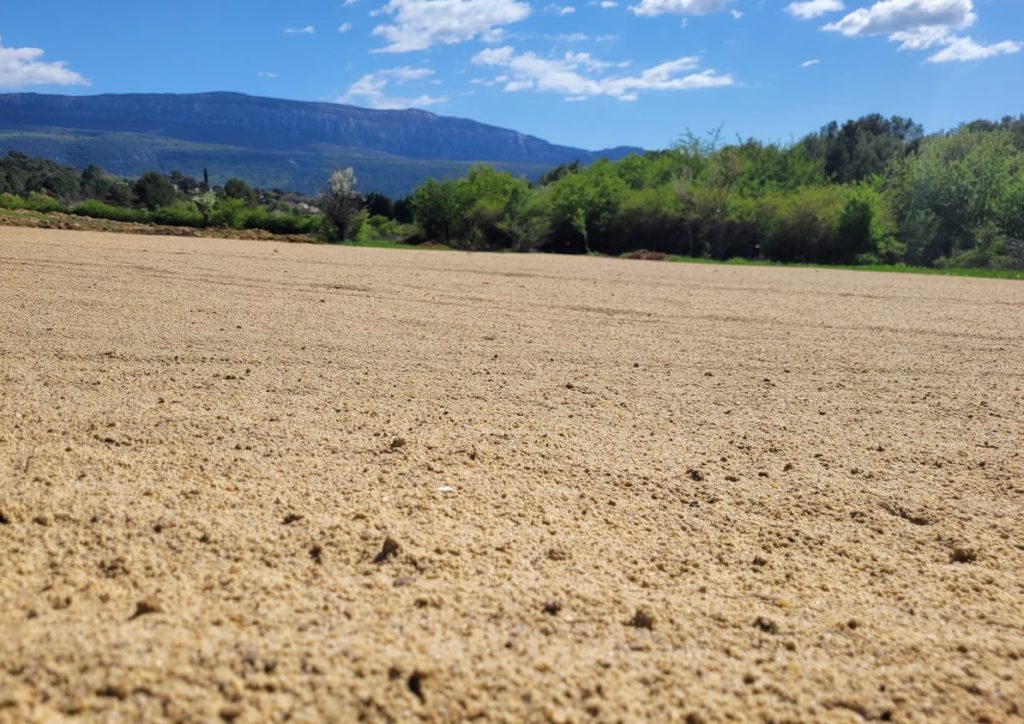
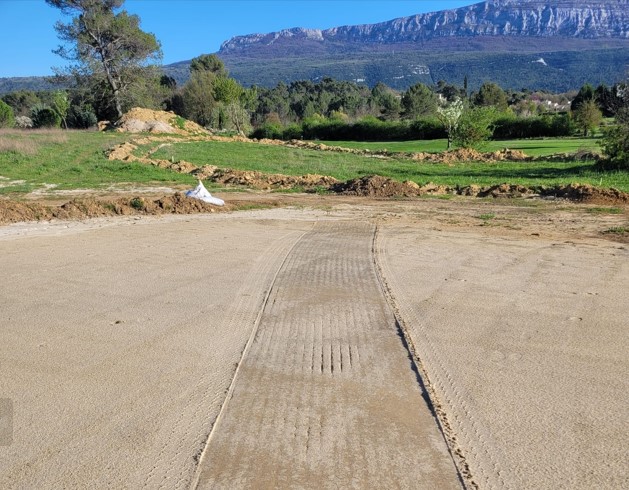
Compaction and seeding
At the beginning of April, as planned, work resumed in accordance with our initial plans. We took care to allow compaction to take place naturally, followed by the addition of 10 cm of soil improver to ensure that the soil of the future plantation would be nourishing.
We then waited for the most favourable weather conditions, with light winds and no rain, before sowing the seeds. Millions of small seeds of the same grass variety used for our other greens were precisely sown. We are confident that they will germinate within the next 10 days, subject to optimal weather conditions.
This step marks a significant milestone in the realization of our project, and we look forward to seeing the green on hole 13 take shape in the coming weeks. We thank you for your patience and continued support as we work to improve and beautify our course for your enjoyment.
We will now begin the landscaping and embellishment around the future green.
Translated with DeepL.com (free version)
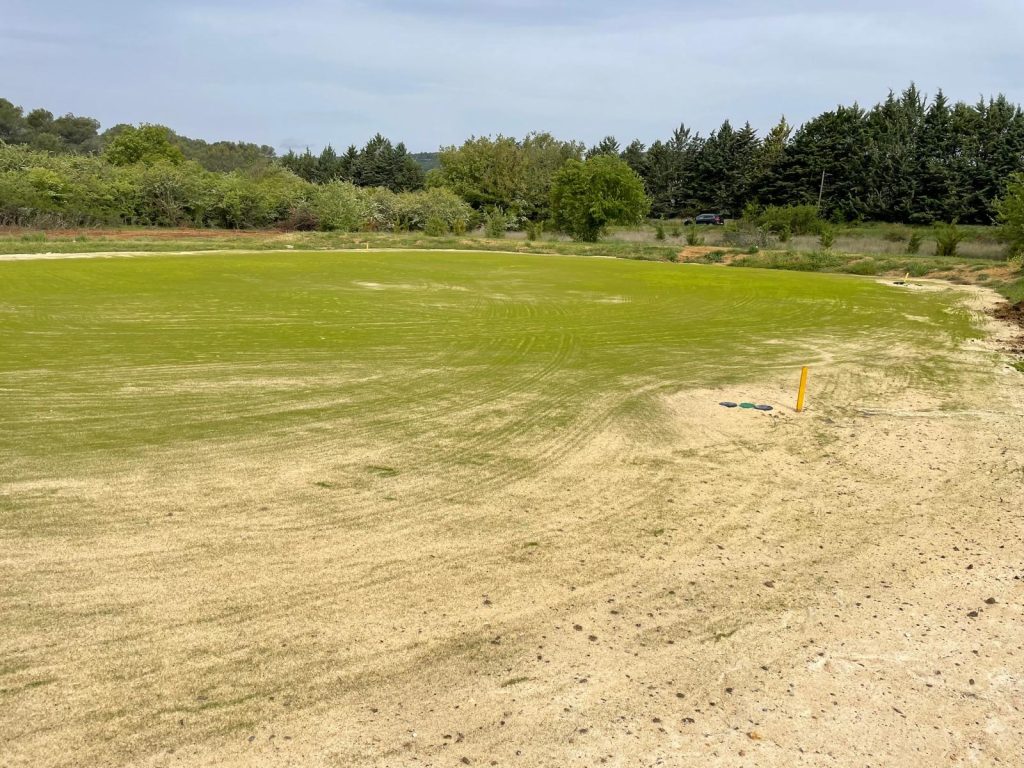
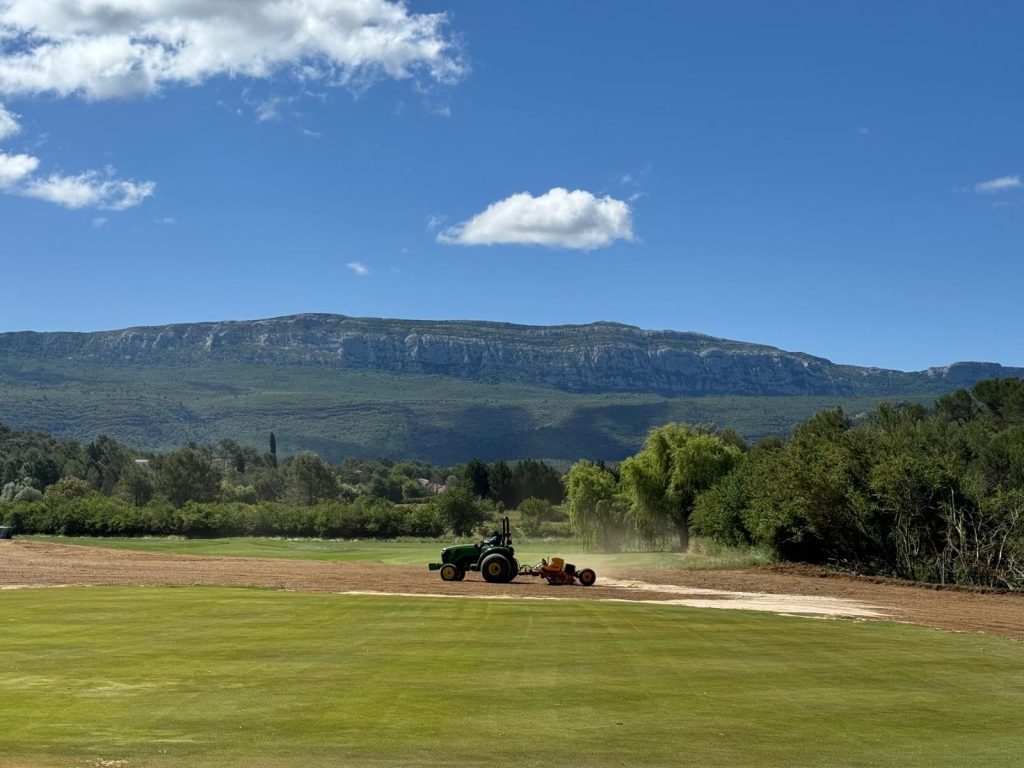
Fertilization and mowing
The final stage in the creation of our new green on hole 13 at Golf Sainte Baume is a crucial moment which guarantees the quality and durability of our course. After carefully sowing the seeds, we’ve entered the final phase, which involves ensuring optimal growth and perfect grass coverage.
Here’s how we do it:
- Precise irrigation: After seeding, irrigation is essential. We use advanced watering systems to encourage seed germination and deep rooting. Each zone of the green receives just the right amount of water to avoid both drying out and waterlogging.
- Fertilization and care: Once the first shoots appear, we apply natural fertilizers to nourish the turf. These nutrients promote healthy, dense growth, essential for quality green. We keep a close eye on the nutritional requirements of the turf and adjust our inputs accordingly.
- Mowing and rolling: As soon as the lawn reaches an adequate height, we begin regular mowing. This operation is carried out with our specialized mowers, which cut the grass at the optimum height, ensuring a smooth, uniform surface. At the same time, we use rollers to lightly compact the ground, guaranteeing a perfect, uneven playing surface.
- Disease and pest management: Green health is our priority. We constantly monitor the appearance of diseases and parasites and intervene quickly with appropriate treatments to protect our turf and ensure its longevity.
- Aeration and drainage: To keep the soil well-drained and aerated, we carry out regular aeration operations. This allows the roots to breathe and efficiently absorb water and nutrients, while avoiding soil compaction problems.
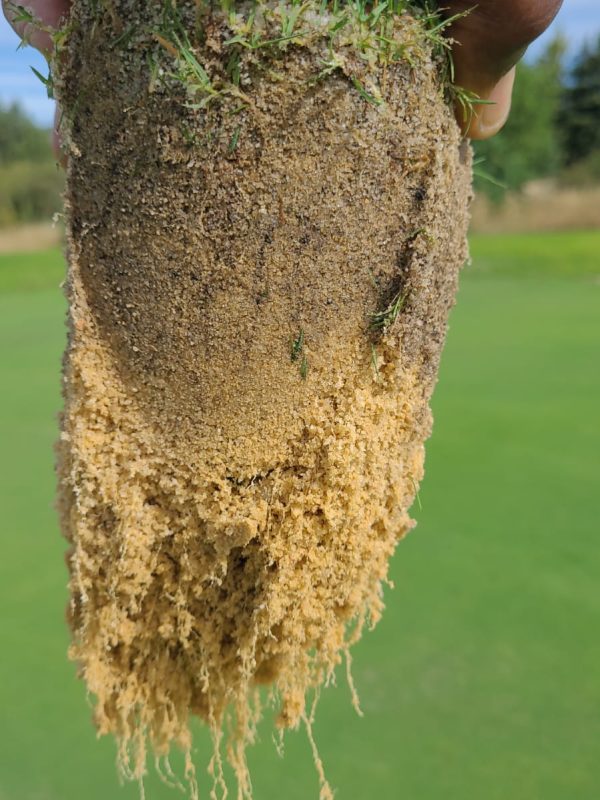
Thanks to this attentive care and our expertise, we hope the new green will be ready to offer an exceptional playing experience.
We look forward to seeing you on the perfect turf, and to sharing with you the pleasure of a beautifully manicured golf course.
We look forward to seeing you in September to let you know the official opening date of the new green.
Don’t hesitate to follow us on the networks so you don’t miss out on these first ball-strikes.

